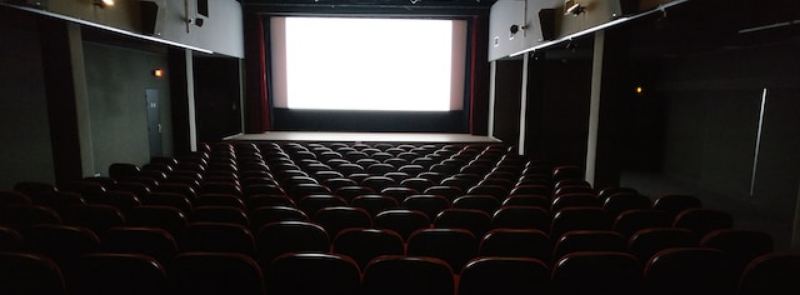
When It Occurs
Every December 1st
Official Website
Timeline
Days Passed (759)
# Hashtags
#DayWithoutArtDay #HIVAwareness
December 1st marks Day Without Art, coinciding with World AIDS Day. Originating in America in 1989, this day symbolizes the profound impact of the AIDS epidemic on the artistic community and commemorates efforts in combating AIDS. On this occasion, artists and art institutions close their doors, dim lights, and veil their works, replacing them with informative posters about AIDS. Some host screenings of films and documentaries online and in theaters. Day Without Art is also a day of remembrance, with memorials being a significant component of the proceedings.
History
- Origins: Day Without Art was created by Visual AIDS, a New York-based organization, in response to the devastating impact of the AIDS epidemic on the arts community. The first observance was held on December 1, 1989, coinciding with World AIDS Day.
- Early Observance: In its initial years, many museums and galleries participated by shrouding or removing artworks to symbolize the loss of talent and creativity due to AIDS. This powerful visual statement aimed to provoke reflection and action.
- Evolution: Over time, the observance has evolved to include a variety of programs, exhibitions, performances, and educational activities that address HIV/AIDS, celebrate the lives and work of artists affected by the disease, and promote ongoing efforts to combat HIV/AIDS.
Significance
Day Without Art holds significant importance for several reasons:
- Commemoration: It honors the memory of artists and others in the arts community who have died from AIDS.
- Awareness: It raises awareness about the ongoing impact of HIV/AIDS and the need for continued education, prevention, and support.
- Solidarity: It demonstrates solidarity with those living with HIV/AIDS and highlights the importance of compassion and support.
- Advocacy: It encourages advocacy for improved healthcare, funding for research, and policies that support people affected by HIV/AIDS.
Ways to Observe
-
Participate in or Visit Exhibitions:
- Special Exhibitions: Visit museums, galleries, or cultural institutions that are hosting special exhibitions or programs related to Day Without Art.
- Online Exhibits: Explore online exhibitions and virtual events that commemorate the day and highlight the impact of HIV/AIDS on the arts community.
-
Attend Events and Performances:
- Memorials and Vigils: Attend memorials, candlelight vigils, or performances that honor those lost to AIDS and support those living with the disease.
- Educational Programs: Participate in educational programs, panel discussions, or lectures that provide information about HIV/AIDS and its impact on society and the arts.
-
Create or Share Art:
- Artistic Expression: Create art that reflects on the impact of HIV/AIDS or honors the memory of those affected by the disease. Share your work in galleries, online platforms, or community spaces.
- Social Media: Use social media to share artwork, stories, and information about Day Without Art. Use hashtags like #DayWithoutArt and #VisualAIDS to join the conversation.
-
Support HIV/AIDS Organizations:
- Donate: Contribute to organizations that support HIV/AIDS research, education, and support services. Your donations can help fund critical programs and initiatives.
- Volunteer: Offer your time and skills to organizations working in the field of HIV/AIDS. Volunteering can make a significant difference in the lives of those affected.
-
Educate Yourself and Others:
- Learn About HIV/AIDS: Educate yourself about the history, transmission, prevention, and treatment of HIV/AIDS. Stay informed about current issues and developments in the fight against the disease.
- Raise Awareness: Share information and resources with friends, family, and your community to raise awareness about HIV/AIDS and reduce stigma and discrimination.
Fun Facts About Day Without Art
- Global Participation: Although it originated in the United States, Day Without Art is observed by cultural institutions around the world, reflecting the global impact of HIV/AIDS.
- Symbolic Actions: In its early years, participating institutions would cover or remove artworks as a powerful symbol of loss. Today, the observance includes a range of creative and educational activities.
- Inspiring Activism: Day Without Art has inspired many artists and activists to use their creative talents to address social issues, promote awareness, and advocate for change.
Inspirational Quotes About Art and Activism
- "Art is not a mirror held up to reality but a hammer with which to shape it." – Bertolt Brecht
- "The purpose of art is washing the dust of daily life off our souls." – Pablo Picasso
- "Art can transform, illuminate, educate, inspire, and motivate." – Harvey Fierstein
Conclusion
Day Without Art is a poignant observance that highlights the profound impact of HIV/AIDS on the arts community and society as a whole. Whether participating in exhibitions, attending events, creating or sharing art, supporting HIV/AIDS organizations, or educating yourself and others, there are many ways to observe this day. Day Without Art encourages everyone to reflect on the loss of creativity and talent due to AIDS, promote awareness and education about HIV/AIDS, and support efforts to combat the disease and support those affected.


